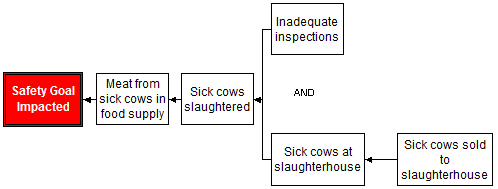By Kim Smiley
One of the most interesting things about root cause analysis is its widespread application. As an engineer, I tend to think about root cause analysis applying to mechanical failures, safety incidents or manufacturing issues, but it can be applied to any system.
Take for instance the recent beef recall. The largest beef recall in US history was initiated on February 17 when Westland/Hallmark Meat Company recalled 143 million pounds of beef. What started the whole thing was an undercover video distributed by the Humane Society of the United States which showed workers kicking, shocking and even fork-lifting sick cows to force them on their feet so they could be slaughtered. Beyond the animal cruelty issues (two workers involved have since been charged), the issue is that meat from sick cows was processed and sold. Government regulations ban cows that can not walk from entering the food supply because consumption of their meat may lead to illness, including mad cow disease.
So how did sick cows end up being slaughter and sold to millions of people? What is the best approach to prevent this type of problem from happening again? Is the answer that we need more government regulations, more frequent inspections or stricter penalties for companies that violate the current regulations? Whose fault is it? Is it the farmers for selling the cows, the health inspectors for missing sick cows or the slaughterhouses for processing sick cows? Performing a root cause analysis would show you that there isn’t one right single answer. All you have to do is look at the recent increase in beef recalls to realize that a simple, single cause solution won’t work. There were five recalls in 2005, eight in 2006 and 21 recalls in 2007. These recalls were not limited to one plant or even one company. Clearly, fining one company or firing a few workers isn’t going to fix the beef supply issues. You need to attack the root of the problem to keep it from growing back and to do that you need to find the root causes (plural). The information needed to do a detailed analysis isn’t available to the public yet, but a very basic root cause analysis follows.
